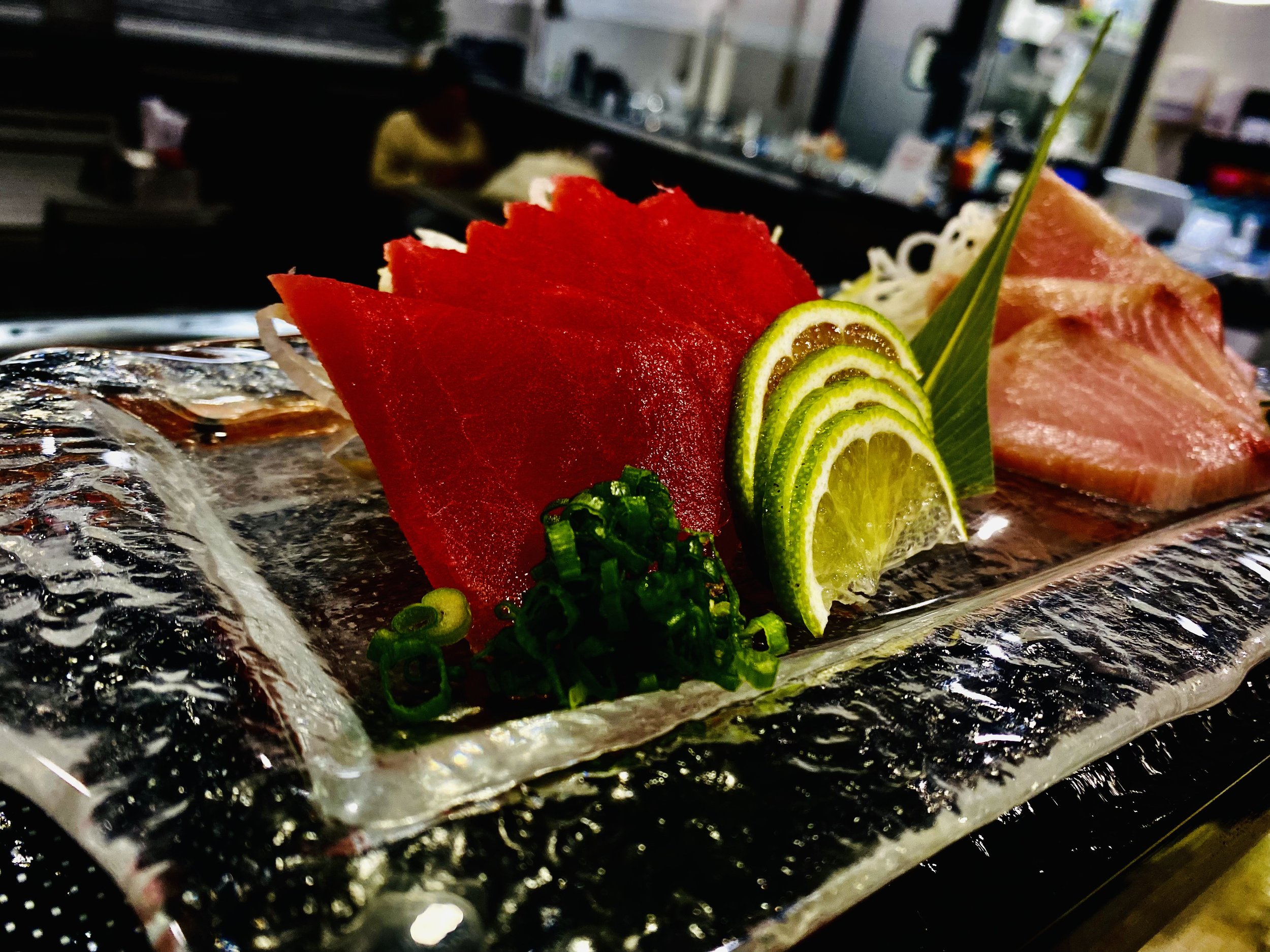Raw
Raw
Tuna
For sushi lovers, tuna is one of the most popular fish found on menus around the world. Tasty and diverse, tuna sushi comes in many different types. The most important part of any tuna sushi recipe is the quality of the main ingredient.
An important question for all sushi lovers: are you being served true sushi grade tuna?
Types of Sushi Tuna
Let's step back for a moment and look at the different types of sushi tuna. Big-eye and yellowfin tuna (also known as ahi tuna) are the most common types of sushi tuna. You'll also find bluefin tuna in tuna sushi recipes. Bluefin tuna breaks down into three sub-categories based on the actual cut:
Akami - from the top/back of the fish
Chu-toro - from the belly of the fish
O-toro - from the upper part of the fish belly, near the head
Salmon
When it comes to salmon, it's possible to get fish from many places around the world: British Columbia, Chile, California, and more. However, at Fish For Sushi, we've selected Black Pearl Scottish salmon sourced from the waters just off of northern Scotland. It's perhaps the perfect area for salmon sourcing -- the water is cold all year, and the Scottish have perfected their feeding process for salmon, ensuring a taste profile that's unique to the region.
Because Fish For Sushi is an environmentally conscious company, it's important that we found a provider that catches their fish inventory in a sustainable, eco-friendly way. Fish For Sushi's salmon supply is all natural with a fully traceable process from sea to catch to processing to distribution. That means that the fish are raised and farmed with zero antibiotics, zero therapeutic agents, and zero added chemicals. Even their diet uses sustainable fish stock that emulates their native feeding selection.
salmon always has a unique texture and flavor, but did you know that these traits can be indicative of where that fish is from and how it was processed? A fish's feeding chain and environment are just half of the equation. When a fish is caught, its connective tissues come apart within 24 hours due to cellular breakdown. Timeliness is important for processing, as pre-rigor salmon has the best flavor and texture. Fish For Sushi sources from farmers that this is all done to optimize the fish's palatability before transporting the frozen inventory from Scotland to a storage facility. In addition, only mature (2 1/2 to 3 years) fish are selected for processing.
Of course, when it comes to fish, the cut is just as important as the source. Fish For Sushi's premium salmon is saku cut for sashimi. That means that you're always getting the best part of the salmon -- the back side -- rather than a tail piece.
From the wild waters of Scotland to your dinner plate, Fish For Sushi delivers the right choice for salmon, giving you fish cuts that look, taste, and smell great. And with a transparent process each step of the way, you can feel confident knowing that the final product is the best of all worlds: sustainably and environmentally farmed, processed to optimize taste, and cut to ensure the very best part of the fish.
HAMACHI
The Japanese amberjack or yellowtail, Seriola quinqueradiata, is a species of jack fish in the family Carangidae. It is native to the northwest Pacific Ocean, from Japan to Hawaii.
It is greatly appreciated in Japan, where it is called hamachi or buri (鰤). These fish are eaten either cooked or raw, and are a seasonal favourite in the colder months when the meat has a higher fat content. Amberjack is typically thought of as a winter delicacy of Toyama and the Hokuriku region. Although it is frequently listed on menus as "yellowtail tuna", it is a fish of an entirely different family, the Carangidae, rather than the family Scombridae that includes tunas, mackerels, and bonitos.[1]
Some of the fish consumed are caught wild, but a substantial amount is ranched (about 120,000 tonnes per year). To populate the pens, every May, workers fish for the small wild fry (called mojako), which can be found under floating seaweed. They scoop out the seaweed together with the mojako and put the mojako in cages in the sea.[2] The small fry grow until they reach 10 to 50 grams in mass; the fry are called inada in eastern Japan (Kantō). They are then sold to aquaculturists, who grow them until they reach 3 kilograms called hamachi, or 5 kilograms called buri. These days, most aquaculturists use extruded pellets to feed the fish.[citation needed]
Tako sansai
Ingredient: Octopus, Ginger, Bamboo Shoot, Kikurage, Mushroom, Bracken, Sesame Seed, Sugar, Vinegar,
Sweet Rice Wine, Soy Sauce, Rice Wine, Salt, Sesame Oil.
Tofu
An introduction to tofu
Tofu, or bean curd, is a popular food derived from soya. It is made by curdling fresh soya milk, pressing it into a solid block and then cooling it – in much the same way that traditional dairy cheese is made by curdling and solidifying milk. The liquid (whey) is discarded, and the curds are pressed to form a cohesive bond. A staple ingredient in Thai and Chinese cookery, it can be cooked in different ways to change its texture from smooth and soft to crisp and crunchy.







